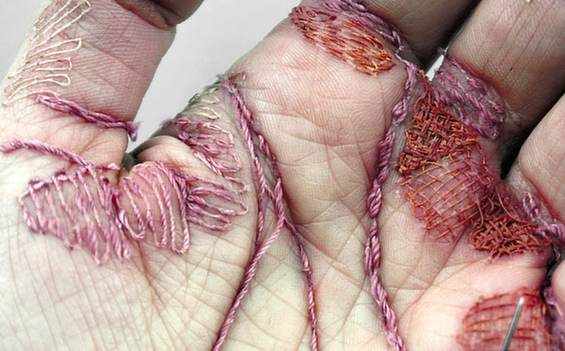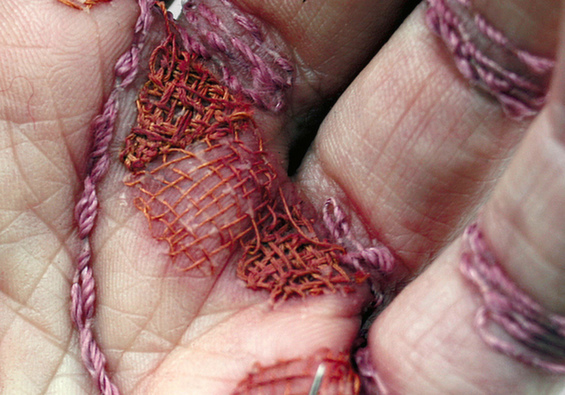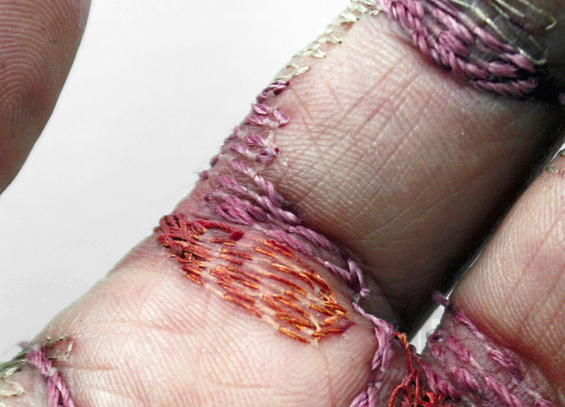via Beautiful Decay
For the artist Eliza Bennett, her flesh is her medium; in embroidering her palm with thick threads, she hopes to explore the ways in which we view gender roles. Her hand, swollen and bruised by her own careful work, is titled “A Woman’s Work Is Never Done,” and her gruesomely precise handiwork serves to remind the viewer of the strife of women laborers, many of whom are paid far less than their male counterparts.
Embroidery, like most traditionally female crafts, is often belittled and considered frivolous, but Bennett’s representation of women’s work is urgently and painfully profound. By literally — and unflinchingly — penetrating her own epidermis, the artist subtly subverts the notion that the efforts of women are superficial or shallow.
Building upon these themes of gender constructs, Bennett’s project blurs the lines between the private realm, coded female, and the public realm, coded male. In many ways, her skin serves as the bridge between the internal self and the external world; in embroidering it, she makes a public spectacle of her own personal narrative. As if reading her own palm, she traces its lines in various soft colors, creating intricate patterns and granting certain patches of flesh both psychological and aesthetic importance.
Bennett’s pointed social critique of ideas of femininity is made stronger by the intimate nature of the work. Feminist scholar Betty Friedan once explained that in the battle for gender equality, the personal lives of women must be made political, that internal struggles must be made visible. “A Woman’s Work Is Never Done” is a poignantly simple execution of this idea; here, Bennett weaves a painful visual story onto her hand, stretching it outwards for public consideration. (via Hi Fructose, Design Boom, and anti-utopias)























